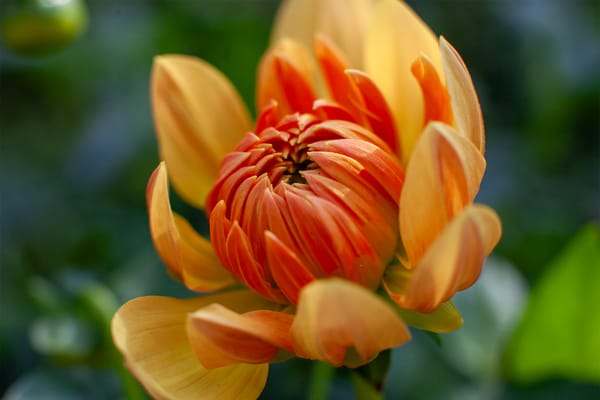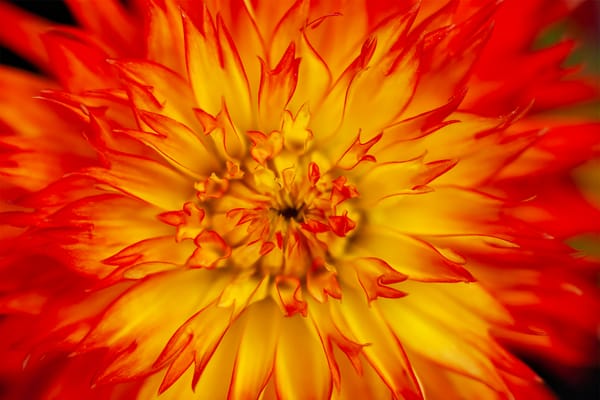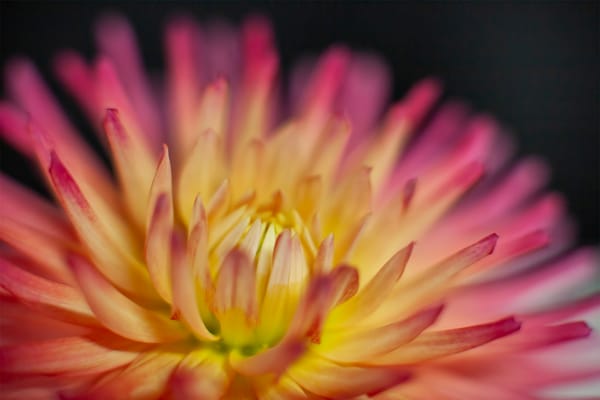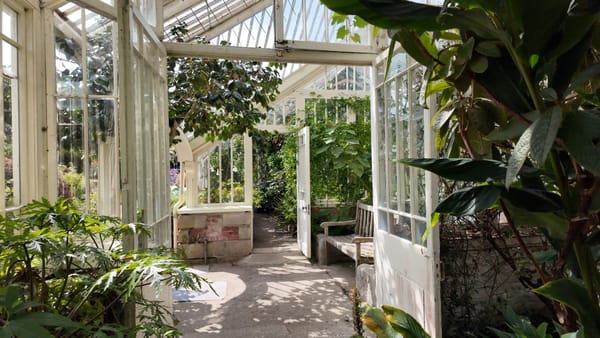There’s a quiet joy in gathering a homegrown bouquet—especially when dahlias are at the heart of it. With their vivid hues, sculptural forms, and generous flowering season, dahlias make perfect partners for a cutting garden. But to unlock their full potential in arrangements, you’ll need more than just a border planting. This guide shares how to grow, harvest, and condition dahlias for stunning bouquets that last—right down to the finishing flourish in the vase.
Best Dahlia Varieties for Cutting
When it comes to cut flowers, not all dahlias are created equal. The best performers offer strong stems, generous bloom production, and long vase life.
- ‘Cornel’ — The cut-flower grower’s staple. With its deep red, perfectly formed ball heads and strong, straight stems, this variety is prized by florists and growers alike.
- ‘Café au Lait’ — An icon of the wedding world. Its creamy blush tones and oversize “dinnerplate” blooms make it a showstopper for romantic arrangements.
- ‘Arabian Night’ — Rich burgundy decorative blooms, bold in the vase and reliably strong-stemmed in the garden.
- ‘Labyrinth’ — With swirling coral-pink petals, this variety brings a softer, romantic texture to mixed bouquets.
- ‘Totally Tangerine’ — A prolific bloomer in vibrant tangerine hues, ideal for both cutting and smaller garden spaces.
- ‘Sweet Nathalie’ — A floristry favourite, soft blush blooms with delicate ruffled edges.
- ‘David Howard’ — Deep orange blooms against dark foliage—perfect for autumnal displays with a strong, sculptural form.
- ‘Hapet Blue Sea’ — A waterlily-form in striking blue-purple tones, great for adding contrast and cool shades.
Tip: Ball and decorative types tend to hold up best in arrangements. Avoid floppy varieties bred primarily for border impact rather than stem strength.
Cultivating Dahlias for the Cutting Patch
Cutting dahlias thrive on good soil, space, and structured support. Think of your cutting patch as a living workshop—every step from planting to bloom supports flower quality and vase life.
- Planting Spacing: Allow 45–60 cm between plants in rows or small blocks to ensure airflow and make harvesting easy. Close planting in cutting beds encourages tall, straight stems.
- Staking: Install horizontal netting or a corral system at planting to prevent wind damage and encourage vertical growth—a must in Cornwall’s breezy spots.
- Soil Preparation: Enrich with compost or well-rotted manure to boost fertility and moisture retention. Dahlias are hungry plants and love rich, structured soil.
- Feeding Routine: Start with a balanced organic feed, then shift to high-potash formulas from midsummer to promote flower production over foliage.
- Deadheading: The more you cut, the more they bloom. Regular deadheading keeps plants in continuous production.
- Watering: Steady, deep watering encourages robust stems, but avoid waterlogged conditions—especially important in Cornwall’s wetter seasons.
Harvesting for Maximum Vase Life
Cutting dahlias is both an art and a science. The difference between a bouquet that lasts three days and one that dazzles for a week often comes down to timing and technique.
- Best Time to Harvest: Early morning or late evening, when plants are cool and fully hydrated.
- Ideal Stage: Cut when the bloom is fully open but before petals start to soften or turn papery. Unlike some flowers, dahlias won’t continue opening after harvest.
- Cutting Method:
- Use sharp, clean snips or secateurs.
- Make a 45° cut just above a leaf pair or healthy bud.
- Immediately place stems into cool water and keep them in the shade.
- Stem Length: Take long stems for versatility in arranging but always leave a leaf pair on the plant to sustain growth.
Conditioning & Vase Care — Making Blooms Last
Once cut, dahlias need swift care to hold their beauty. Here’s how to maximize vase life:
- Strip Lower Foliage: Leaves below the waterline invite bacteria—remove them before arranging.
- Re-Cut Underwater: When moving stems into the vase, re-cut underwater if possible to prevent air blockages.
- Condition Well: Rest stems in deep, cool water for at least two hours—overnight is better—before arranging.
- Floral Preservative: Use a preservative (or DIY solution of sugar, vinegar, and a drop of bleach) to feed stems and suppress bacteria.
- Daily Maintenance: Refresh water and trim stem ends every 1–2 days.
- Display Wisely: Keep arrangements away from direct heat, fruit (which emits ethylene), and drafts.
| Care Step | Why It Matters |
|---|
| Harvest cool, early/late | Prevents wilting, retains moisture |
| Strip submerged leaves | Reduces rot and bacteria |
| Quick transfer to water | Prevents stem blockages |
| Conditioning overnight | Extends vase life significantly |
| Water changes every 1–2 days | Keeps stems fresh and healthy |
| Sharp tools only | Clean cuts prevent damage |
Simple, Stunning Dahlia Bouquet Recipes
Romantic Blush Bouquet
‘Café au Lait’, ‘Sweet Nathalie’, white cosmos, alchemilla mollis, dusty miller foliage — Soft, pastel tones perfect for weddings or summer gatherings.
Hot Border Mix
‘Arabian Night’, ‘David Howard’, ‘New Baby’, crocosmia, bronze fennel — A fiery combination that echoes late summer’s glow.
Jewel-Tone Arrangement
‘Cornel’, ‘Roxy’, ‘Labyrinth’, purple verbena, dark coleus leaves — Bold, jewel-like colours for maximum impact indoors.
Classic Country Posy
‘Bishop of Llandaff’, white phlox, scabious, ornamental grasses — A laid-back meadow style with plenty of pollinator appeal.
The Cutting Garden in Cornwall — Local Considerations
In Cornwall’s coastal climate, cutting gardens face a few unique challenges:
- Wind: Use netting and windbreaks even in sheltered spots—Cornish breezes are notorious for snapping stems.
- Rainfall: Focus on drainage in heavy soils; raised beds or compost-enriched rows keep roots happy.
- Salt Air: Rinse foliage after storms if growing near the coast to prevent salt burn.
- Continuous Bloom: Cornish gardens can enjoy extended flowering into October—perfect for late-season bouquets.
The Joy of Homegrown Bouquets
With the right varieties and a few essential techniques, your dahlias can fill vases from midsummer through autumn’s golden days. Each cut stem carries the story of the soil it grew in, the hands that nurtured it, and the moment you brought it indoors—brightening tables, mantels, and hearts alike.











